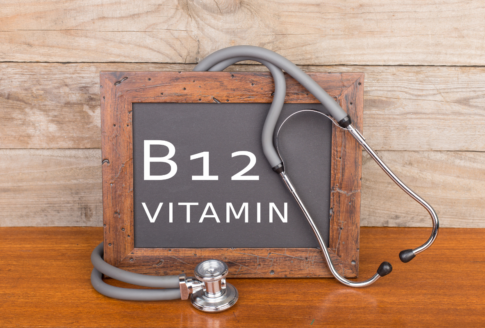Low hematocrit, iron and ferritin: all you need to know!

If fatigue has hit your doorstep, and you notice various symptoms such as pale complexion, decreased endurance, shortness of breath, tachycardia, difficulty in concentrating, or even tendency to faint, it may be time for some blood tests!
Surely your doctor will tell you which indicators to check, however it is easier when you yourself understand what it is about! After all, most of us today want to know exactly what is going on in our body and how we can deal with it.
Table of Contents
What is a hematocrit?
The hematocrit is a value that indicates the percentage of the volume occupied by red blood cells in our blood. These are the cells that contain hemoglobin, a protein that carries oxygen to the tissues and is responsible for the red color in the blood!
Red blood cells are produced in the bone marrow. To do this you need some nutrients such as iron, folic acid and Vitamin B12! When they are absent from the body due to poor nutrition or due to some disease, then there is difficulty in the production of red blood cells, their amount in the blood decreases and the result is a low hematocrit!
Symptoms of low hematocrit
But how does one understand that he has a low hematocrit? Some of the most common symptoms that should make us suspect that something is wrong are (1):
- Pale or yellow skin complexion
- Weakness, low energy
- Fatigue
- Breathing difficulty
- Tachycardia or arrhythmia
- Cold hands or feet
- Difficulty in concentrating
- Dizziness or fainting
- Intense hair loss
- Fragile nails
- Pica syndrome: a tendency to consume inedible substances
- Restless legs syndrome
Many of them also indicate the presence of anemia, a condition quite common in women, in which also low hemoglobin levels are observed.
Low hematocrit: When is it observed?
But how does the body get to the point of having a low hematocrit and what are the main causes? It is usually seen in the following cases:
1.Bleeding
There may be some obvious external bleeding, as is often the case with heavy menstruation or an accident. Sometimes, however, there may be internal bleeding that we have not noticed, such as e.g. occurs in peptic ulcers due to the bacterium H.pylori or chronic use of anti-inflammatory drugs (2).
2. Nutritional deficiency or malnutrition
Lack of iron, vitamin B12 or folic acid in the diet can be very important causes.
3. Inability to properly absorb iron from the body
It may be due to an illness, the wrong food combinations (see below) or an malabsorption syndrome.
4. Hormonal disorders
There may be disturbances in hormones that play an important role in erythropoiesis (eg erythropoietin), menstruation or thyroid function.
5. Bone marrow diseases
Since red blood cells are produced in the bone marrow, some relative health issues have a direct effect on hematocrit levels.
6. Kidney disease
Kidney disease can reduce the production of red blood cells and consequently lead to low hematocrit levels (2).
7. Taking various medications
Some drugs can cause a drop in the hematocrit as a side effect. Your doctor will inform you about it and you will definitely find it on the package leaflet.
8. Pregnancy
There is an increased need for folic acid and iron, which is often not covered by the diet, which is why most gynecologists often recommend a specialized supplement.
9. Liquid overload
Since the hematocrit is an indicator that shows the percentage of volume occupied by red blood cells per blood unit volume, it is easy to see that an overload of fluid can disrupt its levels.
In addition, a small drop in hematocrit can be observed in viruses, body fatigue, intense stress, but also insomnia! When the hematocrit value is low, then oxygen has difficulty reaching body organs.
Foods that strengthen the hematocrit
If the low hematocrit is due to a lack of iron, then you should include in your diet foods rich in it, both from animal (heme iron) and plant (non-heme iron) sources. Very good options for increasing hematocrit are the following (3):
Good sources of heme iron
- Oysters, mussels, clams (avoidance by pregnant women)
- Beef or chicken liver (avoidance by pregnant women)
- Meat, poultry
- Sardines, tuna and other fish
- Eggs
Good sources of non-heme iron
- Dark green vegetables
- Nuts and seeds (preferably raw and unsalted)
- Legumes
- Quinoa
- Sweet potatoes
- Whole grain foods
- Dried fruits (prefer sugar free)
- Molasses
- Dark chocolate (at least 45% in cocoa)
- Tofu
- Soy
Animal vs Vegetable Iron
Depending on whether the iron is of animal or plant origin, ie whether it is heme or non-heme, there is a difference in its bioavailability, ie the percentage that is ultimately absorbed by the body. It is a fact that iron from animal foods has a much higher bioavailability compared to that of plant origin.
In order to improve the absorption of non-heme iron, combine it with fruits and vegetables rich in Vitamin C, β-carotene and malic acid! Some good combinations are the following:
- Lentils and other legumes with red pepper, carrot, tomato or even vinegar
- Dark green vegetables with lemon juice or good quality vinegar
- Colorful salads (vegetables in green-red-orange)
- Unsalted raw nuts with dried fruits (eg apricots, plums, dates, raisins, strawberries)
- Whole grains with dried fruits, orange, kiwi etc.
Foods that reduce iron absorption
Beware of plant iron sources, so as not to combine with foods rich in calcium, tannins or phytates, as its absorption is reduced. Avoid combining e.g. beans or spinach with cheese, drink tea or coffee immediately after a meal, while be sure to soak legumes and whole grains in lukewarm water with a little lemon for several hours in order to reduce phytates.
Other causes of low hematocrit
If low hematocrit is due to a lack of Vitamin B12, then focus on foods of animal origin, while if folic acid or otherwise vitamin B9 is the problem, find it in whole grains, legumes, spinach, avocados, asparagus. etc.
What is ferritin?
Ferritin is a protein that stores iron and under normal conditions reflects the total iron stores in the body. It is a reliable indicator and disturbances in its levels can mean serious problems for our body. People with hypothyroidism often have low ferritin levels (4).
Low ferritin
Low ferritin levels indicate iron deficiency, which can lead to anemia, but is also associated with hypothyroidism, leg weakness, difficulty in breathing, even fainting. Low ferritin can result in skin, hair and nail lesions, and in severe cases, clefts in mouth corners , cavities or even a neurological syndrome (4).
High ferritin
When ferritin levels are high then it means that the body is overloaded with iron, a condition of particular concern as it may indicate a liver problem, the presence of inflammation, while some research shows an increased risk of atherosclerosis mainly in men (5).
Some of the symptoms that indicate high ferritin are fatigue, joint pain, decreased memory and mood disorders, or liver disorders (4).
Is there a special examination?
The hematocrit (Hct) measurement is part of the “General Blood Test“, and is prescribed by the treating physician. By further checking the hemoglobin levels, we can determine if someone has anemia.
Further tests that can show the causes of low hematocrit are the control of iron, B12, folic acid, but also ferritin! It is not uncommon to have normal hematocrit and iron, but low ferritin. That’s why it’s good to include the control of the latter, since as we said it shows the iron reserves in the body.
Iron supplements
The specialist who monitors you will give you specific instructions and if he deems it necessary will recommend a dietary supplement with iron, folic acid or B12 depending on the deficiencies that will be identified.
Side effects
Particular attention should be paid to the form in which these nutrients will be found, in order to avoid unpleasant side effects, but also to have better bioavailability in the body.
Specifically, in the case of iron, disorders are sometimes observed, such as constipation, nausea, stomach upset, abdominal pain, tendency to vomit, metallic taste, etc. (3). It is therefore very important to inform your doctor if you notice any discomfort, but also to read carefully the description of the preparation before taking it.
If constipation occurs for several days and is not treated or stopped, the poisoning can be caused, since the useless substances are not eliminated, but accumulate in the intestine. Now, there are specialized formulas of dietary supplements, which emphasize that they do not cause constipation and do not bother the stomach.
Instructions for Use
Also, read the instructions for use carefully about when to take the supplement (on an empty or full stomach), as this often varies by manufacturer. Usually, iron intake is recommended on an empty stomach or with the simultaneous consumption of a source of vitamin C (eg orange juice).
At Vita4you.gr you will find a great variety of supplements for anemia!
References
Disclaimer
The content of this blogspot is not and can not be considered as medical advice, diagnosis or treatment. All information is provided to readers solely for informational purposes. There is no intention to substitute this content for personalized medical advice, diagnosis, prognosis or treatment.










Leave a comment